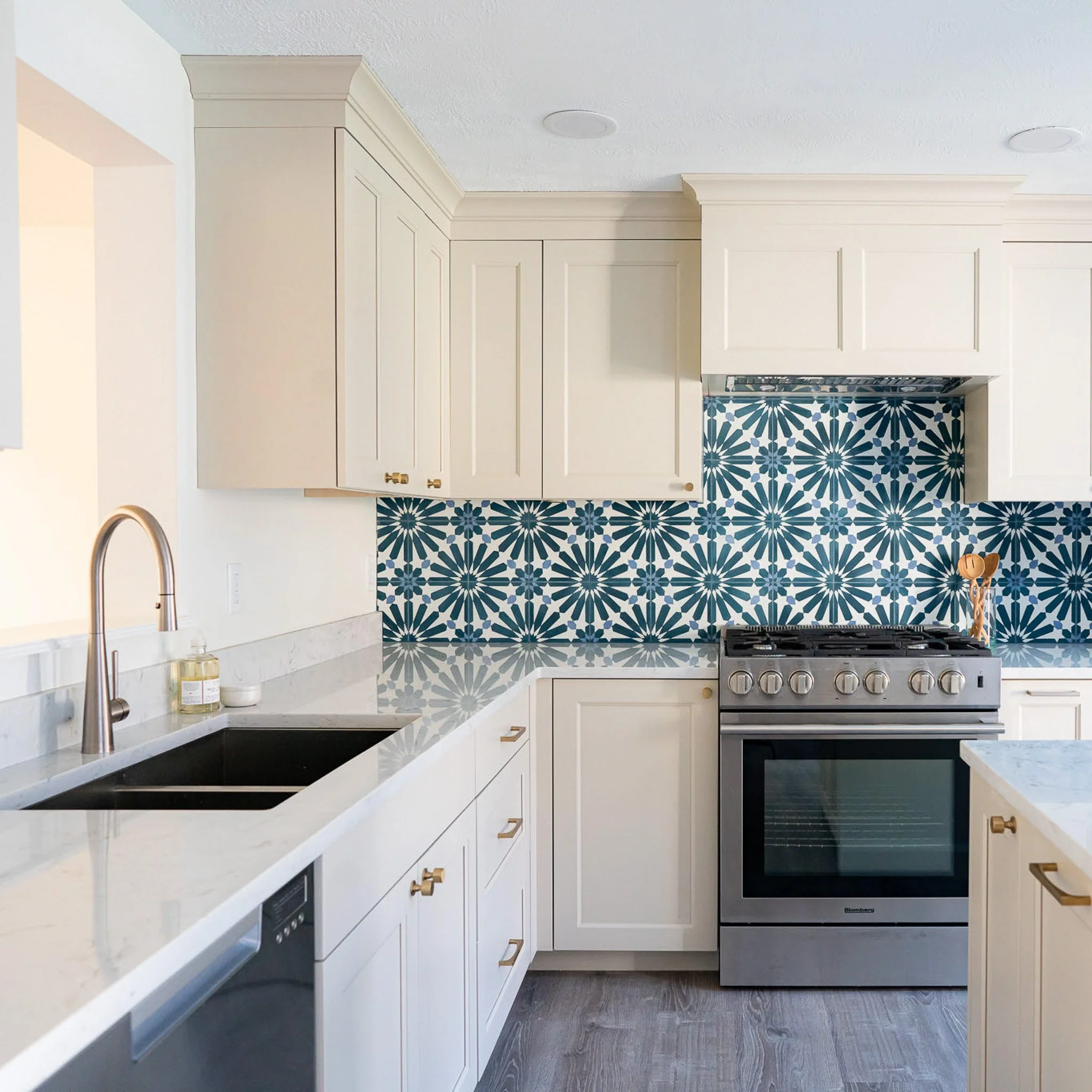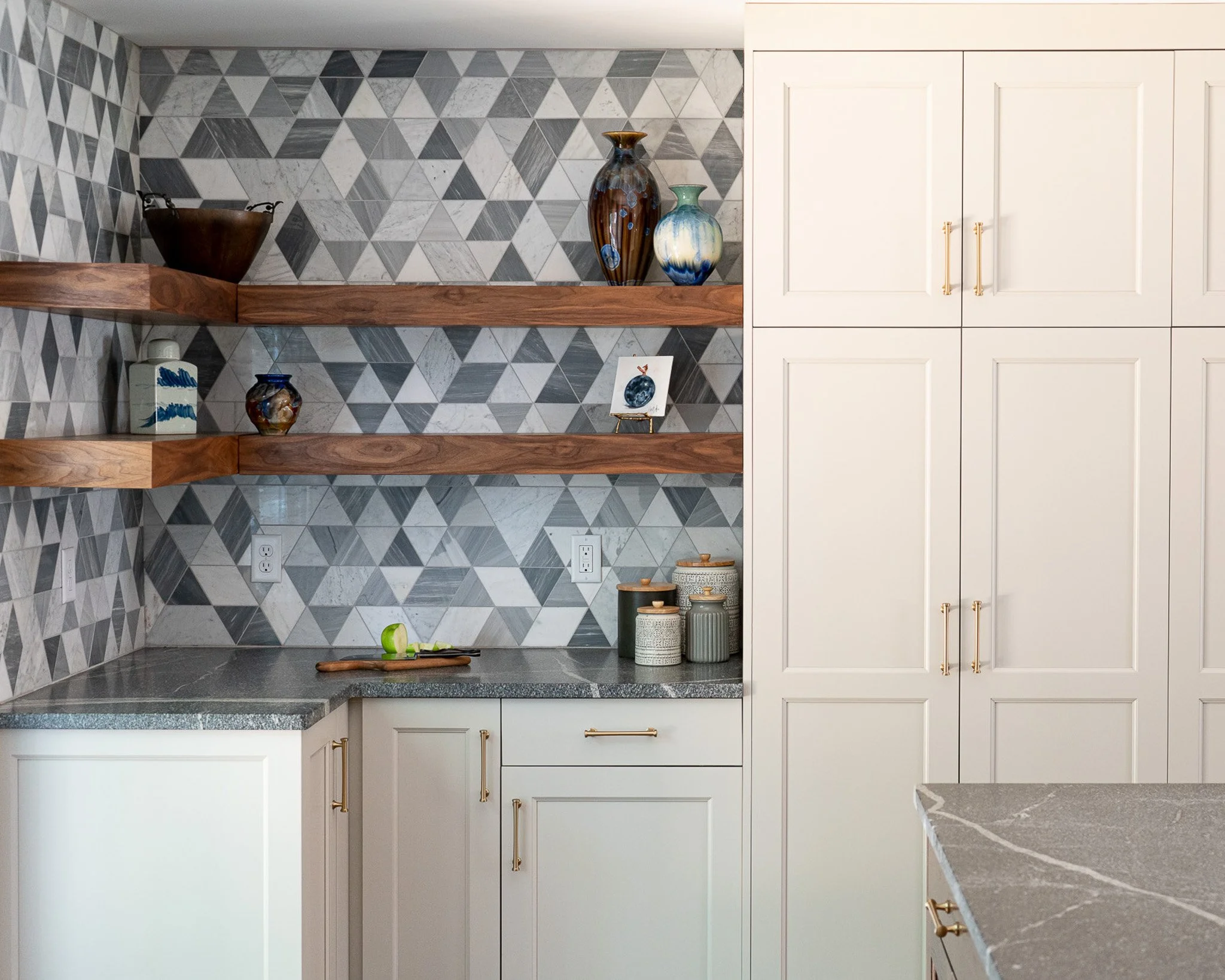Backsplash Basics: What to Know Before You Choose Yours
The kitchen backsplash is one of those design details that does a lot of heavy lifting—both visually and functionally. While it’s easy to get lost in tile samples or scroll through inspiration photos, understanding the purpose, material options, and design principles behind a backsplash can help you make a decision you won’t regret.
Whether you’re doing a full kitchen renovation or simply updating the walls, this guide explores everything you need to know about backsplash design—from materials and maintenance to layout and value.
What Is the Purpose of a Backsplash Beyond Just Aesthetics?
At its most basic, a backsplash protects the drywall behind your countertops from grease, moisture, and grime. It’s far easier to clean than painted drywall, and when chosen thoughtfully, it can also enhance the look and feel of the kitchen.
What Are the Most Popular Backsplash Materials, and What Are Their Pros and Cons?
Porcelain tile is one of the most popular backsplash materials for good reason. It’s affordable, easy to clean, and available in a huge range of shapes, colors, and textures. The main downside is grout maintenance. Depending on the type of grout used, it can darken or stain over time. That’s why we often recommend epoxy grout, especially behind the range—it’s more durable and much easier to clean.
Another increasingly popular choice is using the same material as your countertop for the backsplash. Quartz, for example, is nonporous, low-maintenance, and resists staining. Granite is also a solid option, but slabs with large, dramatic veining may be more prone to cracking or showing wear. Marble offers a “living finish,” meaning it develops patina and shows signs of use more quickly—something some homeowners love and others want to avoid. The major benefit of a slab backsplash is the seamless look—no grout lines, and a clean, cohesive surface.
How Does a Backsplash Influence the Look and Feel of a Kitchen?
A backsplash can either serve as a statement piece or act as a quiet, unifying element in the background. The size, color, texture, and material you choose can influence how open, cozy, modern, or traditional your kitchen feels. It also has the power to enhance or compete with other design elements, so balance is key.
How Do You Choose a Backsplash That Complements Your Countertops and Cabinets?
When helping clients choose a backsplash, we look at tone, color palette, style, and budget. Often, we present a range of tile samples to show how different options can shift the overall feel of the space. If the countertops feature bold stone or the cabinets have a striking finish, we might lean toward something more subtle. In a more neutral space, we have more freedom to play with patterns, texture, or color.
Ultimately, the right backsplash is one that supports the homeowner’s vision—whether they’re aiming for minimal, character-filled, or something in between.
What Are Some Timeless vs. Trend-Forward Backsplash Styles?
Subway tile is a classic. Its simplicity and versatility make it a safe choice for nearly any kitchen style. Paired with a matching or low-contrast grout, it adds texture without drawing too much attention.
Slab backsplashes, while not new, have gained popularity in recent years. Especially in modern kitchens, homeowners are drawn to the clean lines and dramatic veining of a single continuous piece of stone. It’s a more design-forward choice, but still rooted in functionality.
Can You Mix and Match Materials in a Backsplash?
You can, and in the right context, it can look great. We often use a secondary material—like a contrasting tile or slab—behind the range, along a coffee bar, or in a pantry to create zones within the kitchen. This works especially well in larger spaces, but we’ve also done it in small kitchens where an accent wall or open shelving area needed a little definition. The key is making sure it enhances the design rather than cluttering it.
What Role Does Grout Color Play in the Design?
Grout color has a surprisingly big impact on the final look of a backsplash. If you want a seamless, understated look, choose a grout color that closely matches the tile. If you want to highlight the tile pattern or create a more graphic effect, go with a contrasting grout.
One of our designers summed it up best: grout can either make a backsplash feel like one cohesive surface or like a wall of individual shapes. Neither is wrong—it just depends on the look you’re going for.
Which Backsplash Materials Are Easiest to Clean and Maintain?
Porcelain tile and quartz slabs are among the easiest to maintain. Both resist stains, wipe clean easily, and hold up well in high-traffic areas.
Are There Backsplash Options That Work Better Behind the Range?
If you cook frequently, it’s worth considering a slab backsplash behind the range. It eliminates grout lines—which means less cleaning—and if you choose a durable, low-porosity material like quartz or sealed granite, you don’t have to worry about staining or heat damage.
How High Should a Backsplash Go?
At minimum, tile backsplashes should go up to the bottom of the wall cabinets—typically about 18 inches. In areas without upper cabinets, like around windows or floating shelves, we usually bring the backsplash all the way to the ceiling. It adds vertical interest and makes the space feel taller.
In lower-impact zones or for budget-conscious designs, a 4-inch slab backsplash (cut from the same material as the countertop) can offer a clean, minimal look. We often pair that with a full-height backsplash in high-use areas like behind the range.
Is It Possible to Install a Backsplash Yourself?
Yes, especially if you’re using tile. You’ll need a tile saw, a laser level, spacers, and a good understanding of how to apply mortar and grout. It’s important to prep the wall properly and take your time—uneven lines, missing spacers, or poor adhesion can all affect the result. Watch a few tutorials, wear proper safety gear, and know when to call in a pro if it feels overwhelming.
What Are Some Creative Layout Patterns That Can Elevate Basic Tile?
Even the most basic tile can look elevated with the right layout. Herringbone is still a popular choice, though slightly on the decline. Other layouts like stacked vertical, offset brick, basketweave, or custom shapes (like scallops or hexagons) add subtle dimension. Hand-painted or textured tiles can also bring character to a space without overwhelming it.
What Are the Most Cost-Effective Backsplash Options That Still Look High-End?
Porcelain tile is the best value. There are now many styles that mimic handmade or hand-painted tile at a fraction of the cost. When installed well, these can look just as refined as their more expensive counterparts.
Does an Upgraded Backsplash Add Value to Your Home?
It can—especially if you’re staying in your home for a while. A beautiful backsplash adds to your daily enjoyment of the space and can make the kitchen feel more finished and cohesive. If you're renovating with resale in mind, consider choosing something timeless and broadly appealing. If it’s your forever home, don’t be afraid to splurge on the tile you really love. It’s a small area that can make a big impact.





